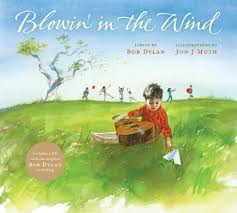

The Teachable Moments in Life Come Very Unexpectedly. This is One of Them.
The last several months in the United States, and around the globe have been filled with anxiety and dread of the spread of Covid-19.
Lives have been not only lost, but put on hold or changed forever through loss of jobs, businesses, social distancing as the new normal causing increased feelings of isolation, weddings postponed, funerals curtailed, loved ones in nursing homes, protected from visitors for the greater good, and their own safety and life, as we know it, has generally come to a screeching halt.
And in the wake of this has come the death of Mr. George Floyd who died during a police arrest in Minneapolis, Minnesota. Protests have begun over his death and treatment that has precipitated legitimate outrage and a tipping point of sorts across not only this country, but elsewhere in the world.
Our children see this and have questions.
But, the answers to those queries are perhaps not so clear. Alongside the peaceful protest marches, there are also scenes of unbelievable carnage, arson, looting, and violence that has no redeeming value, except as either a blind reaction of frustration to the death of George Floyd or perhaps, an opportunity for some in our country to use this moment to destroy and tear down.
Our children see whole neighborhoods impacted with destruction.
Will these protesters help to rebuild those neighborhood?
Who will?
Who are the stakeholders here?
It takes minutes to destroy, but it also will take time, energy, perseverance and money to rebuild what has been razed.
Martin Luther King, Jr. has an amazing quote that I have thought of many time recently:
“Darkness cannot be driven out by more darkness; only light can do that.”
And that is the message that we need to impart to our children. The darkness of racial discrimination will not be driven out by anarchy and destruction. It will be driven out by the rule of law, the teaching of values to our children that no one is above the law.
We must teach them that, as Martin Luther King, Jr. said, a man should be judged by the “content of his character and not the color of his skin.”
These values start in the home.
The broad brush strokes of “every” helps not a whit.
Every police officer is not bad….or good.
The world is not a perfect place.
Each race has its people of goodness…and not so good.
Every person we meet deserves a chance to be GIVEN a chance at “life, liberty and the pursuit of happiness.” But, take careful notice of the word “pursuit.” There is NO guarantee beyond the first two.
There will always be someone smarter, wealthier, better looking, and more fortunate in some aspects of life than we are.
That is life.
But, that too, does not matter.
What does matter is that our children learn from us in what we model to them each day. It has the greatest share of influence on their outcomes.
Their ability to navigate life, persist in the face of adversity, not be overwhelmed by failure, but see it as a teachable moment, and most importantly respect each and every person they come into contact with as another person on the journey of life and worthy of respect, is what will ultimately shape their character in terms of values that will sustain them for a lifetime.
And so we come to the picture book.
So much is taught in the picture book.
Today I’ve chosen the picture book called “Blowin’ in the Wind,” lyrics by Bob Dylan and illustrations by Jon J. Muth.
It’s full of questions, which is why kids will love it. They are the pursuers of the eternal “WHY?”
And it’s basically a series of queries as to why things are the way they are?
In the 1960’s, Dylan’s song was employed as an anthem of the civil right movement that confronted “universal questions of freedom, justice, war and peace.”
In this beautifully rendered picture book edition of Bob Dylan’s 1963 song, with paintings by Caldecott honoree, Jon J. Muth, the art perfectly complements the lyrics.
Additionally, there is a CD enclosed that has the original Bob Dylan recording.
Whether it shows a picture of a small boy dragging his hand in the water in a row boat, with a round red balloon that sort of signals the “pay attention moment” as the lyrics of “How many times?” are sung in varied forms, or a series of beautiful childlike moments of reverie, it captures the needed mood.
The red balloon is a recurring metaphor for questions that the lyrics pose and it follows the children on their journeys past cannons and people of color lining a cliff.
White paper planes randomly fill the sky, taking the place of the red balloon, as the question is left lingering along with the white soaring papers in the air:
The answer, my friend,
is blowing’ in the wind.
The answer is blowin’ in the wind.
It’s an answer children will seek to find, and all of us, together, need to question, as well.
This is a wonderful picture book to start the conversation.
